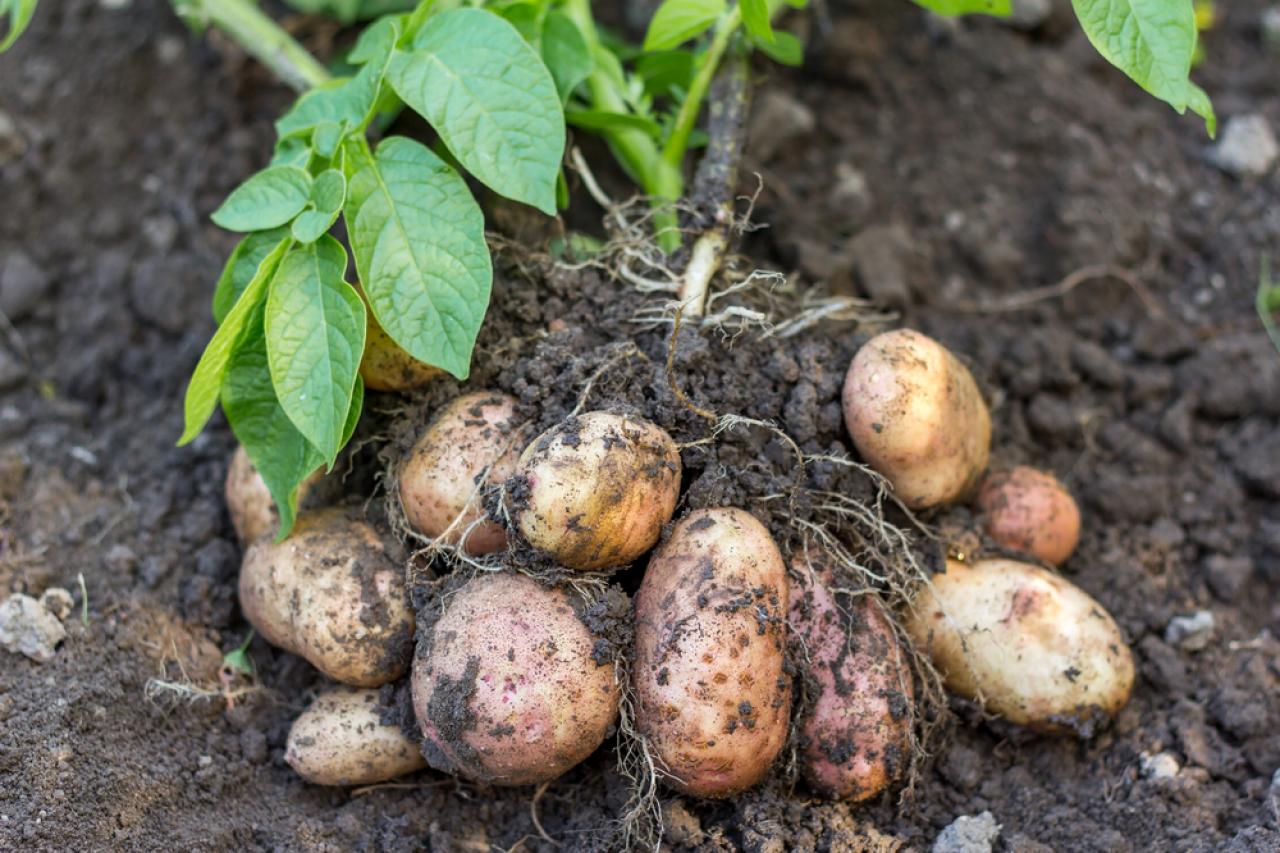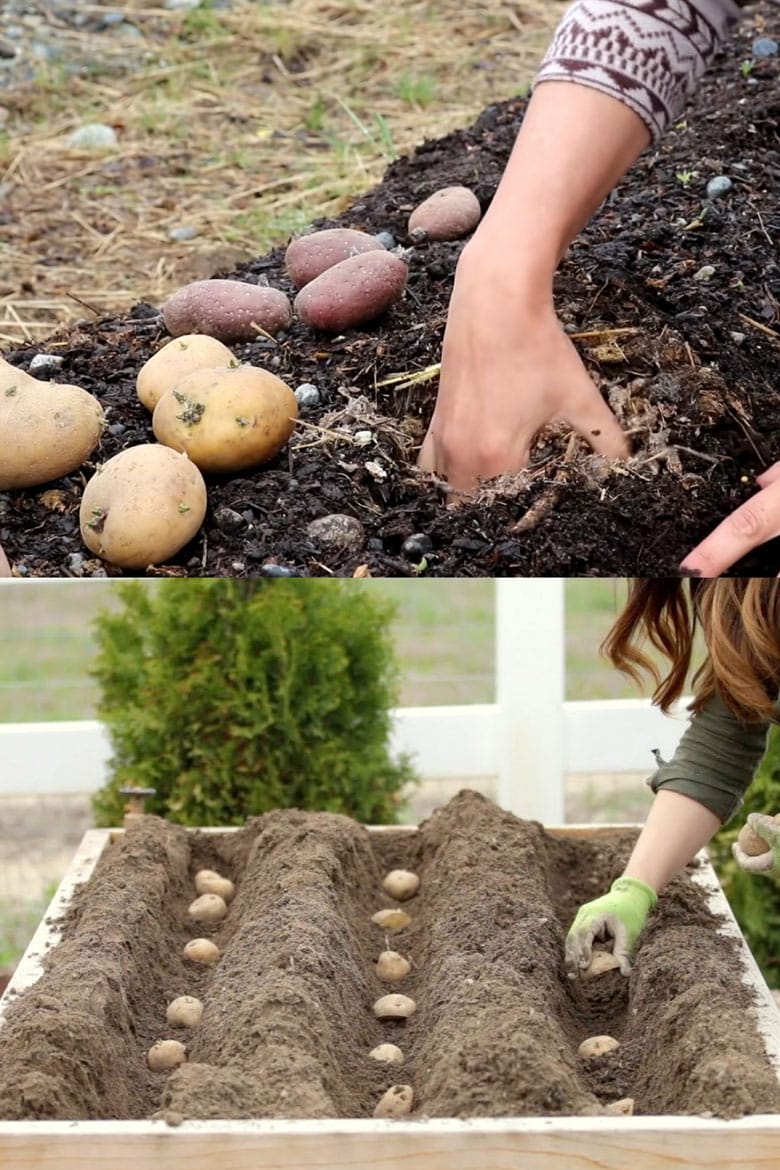Unlocking the Secrets of Homegrown Potatoes
Homegrown potatoes are a culinary delight, offering a flavor and texture that is unmatched by store-bought varieties. By growing potatoes from a potato, you can experience the joy of harvesting fresh, delicious spuds right in your own backyard. This beginner’s guide will walk you through the process of cultivating your own spuds, from selecting the right potato for planting to cooking up a storm with your freshly harvested tubers.
How to Choose the Right Potato for Planting
When it comes to growing potatoes from a potato, selecting a healthy, disease-free potato is crucial for a successful harvest. A good quality potato for planting should be firm, smooth, and free of bruises or soft spots. Look for potatoes that are certified disease-free and have at least one “eye” each, as these will produce the best results. Avoid using potatoes from the supermarket, as they may be treated with a sprout inhibitor to prevent them from growing. Instead, purchase seed potatoes from a gardening store or nursery, or save your own potatoes from a previous harvest. Before planting, make sure to prepare your potatoes by cutting them into pieces, making sure each piece has at least one eye. Let the cut pieces air dry for a day or two to help prevent rot and promote healthy growth.
Preparing the Soil for Your Potato Crop
Before growing potatoes from a potato, it’s essential to prepare the soil to provide a suitable environment for your crop to thrive. Potatoes prefer well-draining, loose soil with a pH between 4.5 and 7.0. To test your soil pH, use a DIY kit or send a sample to a laboratory for analysis. If your soil is too acidic or alkaline, add lime or sulfur to adjust the pH accordingly. Additionally, incorporate organic matter such as compost or well-rotted manure to improve soil structure and fertility. This will help to promote healthy tuber growth and reduce the risk of disease. When preparing the soil, also consider the potato variety you’re planting, as some may have specific soil requirements. By creating a well-balanced and fertile soil environment, you’ll be well on your way to a successful potato harvest.
Planting and Caring for Your Potato Crop
Once you’ve prepared the soil and selected a healthy potato for planting, it’s time to start growing potatoes from a potato. To plant, dig a trench that is 6-8 inches deep, and place the seed potato pieces at the bottom, spaced about 12 inches apart. Cover the potatoes with a layer of soil, and then add a thick layer of mulch or straw to retain moisture and suppress weeds. As the plants grow, add more soil or mulch around the base of the stems, leaving only a few inches of the leaves exposed. This process, known as “hilling,” will help to produce more tubers. Water the crop regularly, but avoid overwatering, which can lead to rot and other diseases. Fertilize the potatoes with a balanced fertilizer once a month, and keep an eye out for common pests and diseases such as aphids, slugs, and blight. By following these steps and providing proper care, you’ll be on your way to a successful potato harvest.
The Waiting Game: When to Harvest Your Potatoes
After weeks of nurturing your potato crop, the wait for harvest can be agonizing. But patience is key when growing potatoes from a potato. The exact harvest time will depend on the variety of potato you’re growing, but generally, it’s around 70 to 100 days after planting. To check for readiness, gently dig around the plants with a fork, being careful not to damage the tubers. If the potatoes are ready, you’ll find them just below the soil surface. Harvest them in the morning, when the soil is still cool and moist, to minimize damage. Use a gentle digging motion to uncover the tubers, and then lift them out of the soil. Brush off any excess dirt, and store the potatoes in a cool, dark place to preserve their flavor and texture. Proper harvesting and storage techniques will ensure that your homegrown potatoes remain fresh and delicious for months to come.
Troubleshooting Common Issues in Potato Growing
Despite careful planning and attention, issues can still arise when growing potatoes from a potato. Scab, a bacterial disease that causes rough, scabby patches on the tubers, can be prevented by maintaining a consistent moisture level and adding organic matter to the soil. Blight, a fungal disease that causes black spots on the leaves, can be treated with copper-based fungicides and removed infected plants. Pests like aphids, slugs, and wireworms can be controlled using natural methods like introducing beneficial insects, using physical barriers, and applying organic pesticides. Other common issues include tuber greening, caused by exposure to light, and hollow heart, caused by rapid growth. By being aware of these potential problems and taking preventative measures, growers can minimize losses and enjoy a successful harvest. Regularly monitoring the crop and taking action at the first sign of trouble will help to ensure a healthy and productive potato crop.
Experimenting with Different Potato Varieties
One of the joys of growing potatoes from a potato is the opportunity to experiment with different varieties. With hundreds of types to choose from, growers can explore a wide range of flavors, textures, and colors. Popular varieties like ‘Russet’ and ‘Yukon Gold’ are great for beginners, offering high yields and disease resistance. ‘Red Thumb’ and ‘Purple Peruvian’ add a pop of color to the garden, while ‘Fingerling’ and ‘New Potato’ offer unique shapes and flavors. When selecting varieties, consider factors like climate, soil type, and desired harvest period. Some varieties, like ‘Early Season’ potatoes, mature quickly, while others, like ‘Maincrop’ potatoes, take longer to develop. By trying out different varieties, growers can discover new favorites and expand their knowledge of growing potatoes from a potato. Experimenting with different varieties can also help to extend the harvest season, as different types mature at different times. With so many options available, the possibilities are endless, and the fun of discovery is all part of the process.
Enjoying the Fruits of Your Labor: Cooking with Homegrown Potatoes
After successfully growing potatoes from a potato, the reward is in the eating. Homegrown potatoes offer a unique flavor and texture that is unmatched by store-bought varieties. To bring out the best in your harvest, try roasting or boiling them to highlight their natural sweetness. For a twist on a classic, try making potato pancakes or latkes, which showcase the versatility of this humble tuber. Grilled or pan-fried, homegrown potatoes make a delicious side dish that pairs well with a variety of main courses. For a more exotic flavor, try making potato gnocchi or croquettes, which are sure to impress. When cooking with homegrown potatoes, remember to handle them gently to avoid bruising, and store them in a cool, dark place to preserve their flavor and texture. By experimenting with different recipes and cooking methods, growers can unlock the full potential of their homegrown potatoes and enjoy the fruits of their labor.








